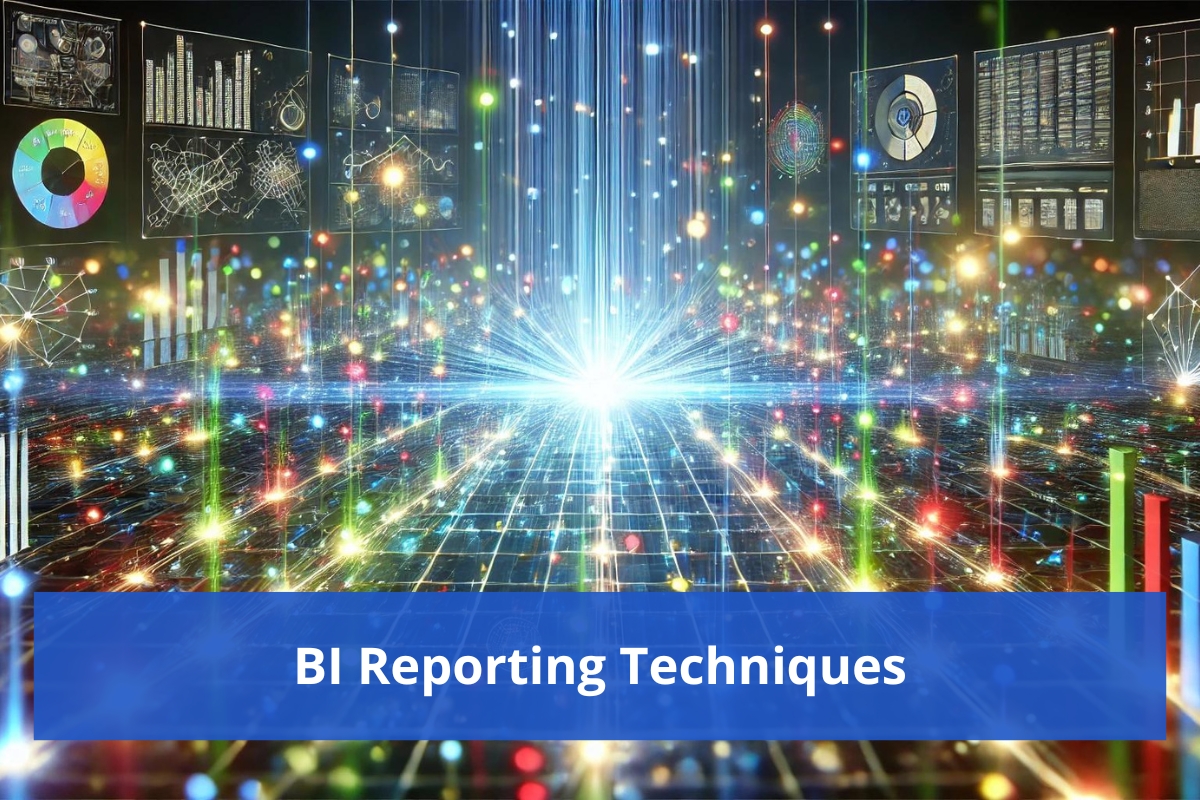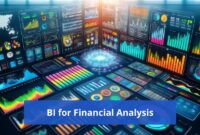Data is one of the business assets whose value cannot be measured today. It is, therefore, no surprise that both big and small industries have resorted to ‘Business Intelligence (BI)’ in the quest of understanding and utilizing this data for making important decisions. It is at this stage that BI reporting techniques come in, where in one way or another, serve the purpose of converting data into reports and dashboards (visual representation of data) necessary to run the business. The purpose of this article is to outline in brief the core BI reporting techniques, their relevance in business as well as the need of businesses to adopt the use of such techniques in decision making processes.
What is BI Reporting?
Business Intelligence (BI) reporting encompasses a collection of data gathering, analyzing and presenting information that is helpful for decision making in the organization. For each stage in the business process management or decision making process, certain Business Intelligence techniques can assist in extracting relevant data from various sources and put this data in order for usability. So, the end aim is always to empower organizations by bringing forth new business solutions, tracking progress made, and forecast what is expected in the future. The reports can be of many types such as dashboards, charts, tables and even Microsoft Word custom reports catered for the specific needs of the business.
Key Approaches to BI Reporting
There are various approaches that organizations use in order to derive the most out of their BI reporting. Each approach has its pros and cons and can be utilized depending upon the type of data and the objectives of the business.
Dashboards
Dashboards represent one of the foremost trends in BI reporting. Their main purpose is to present information in a concise and easily comprehensible manner collecting information in dynamic graphics, which enables the users to perceive the status of key performance indicator (KPI) metrics quickly. Dashboards empower IT professionals to design and modify reports making them up to date and relevant by providing alternate views or filters for the data. They are appropriate for the assessment of current performance and tracking changes over a certain time period.
Ad Hoc Reporting
Ad hoc reporting enables users to compose reports instantaneously, without the assistance of information technology personnel. This technique can help when managers, or other authority figures, need to answer a particular question, where there is a responding inquiry. Ad hoc reports have the advantage of providing windows that allow users to specify what headings and topics of interest they would want to delve into. This minimizes the necessity of going through pre-organized documents thus enabling quicker modifications to how an organization uses data.
OLAP (Online Analytical Processing)
An OLAP is a BI reporting method most focused on the multidimensional data on site. It is where data is arranged into cubes so that a user can look at the data from different angles. For instance, a sales agent will be able to view data on the basis of time, location and product simultaneously. If there will be many patterns and trends that the big data can help bring to light, OLAP is useful in meeting complex reporting needs.
Data Visualization
Data Visualization is the composition of figures in the reporting process where in place of raw figures, charts, graphs, and maps etc. are applied. Personal data of this nature should not be mistaken for general reporting. It helps to present potential data insights that would be hard to explain verbally or in writing. Any corporate data is prepared in reports and presentations for sharing around the organization. They allow stakeholders to quickly see the pertinent data and make rational decisions without wasting time.
Scorecards
A scorecard summarizes, as well as visualizes, the key performance metrics used for measuring the predefined objectives. It helps the business to come up with an easy conceptual measure of success which is tracking the current performance against the set targets. The scorecards make use of colors to represent the score of the business; red means that the business is behind schedule, yellow is for the business that is doing okay while green indicates that the business is ahead of schedule. This obtained method is equally efficient when it comes to performance management and strategy implementation.
Usage of Predictive Analytics Reporting
While diagnostic analysis does utilize past data, it is not by any means limited to past data. Medium or long-term projections may be made using future-oriented (predictive)analytics methods. Today’s predictive analytics and reporting tools rely on statistical techniques and machine learning processing to estimate probabilities looking back and forward at given data. It means being able to act ahead of the customer or the market or risk – a much more efficient way of running a business. Predictive analytics reporting is especially important in any sectors like finance, healthcare or even marketing where one needs to forecast what will happen next.
Scheduled and Automated Reporting
Scheduled and automated reporting is also popular in many organizations when it comes to delivery of reports as a lot of critical information is needed by the target audience. Also, BI tools become smooth because one needs only to arrange for generation and timely submission of reports for example after every day, week, or month. This lessens the work involved in report generation and more so the timely information reaches the relevant authorities. Such reporting could help mainly for such periodic reports which do not require much effort to change their format and structure.
Why the Importance of BI Reporting Techniques
The appropriate BI reporting tools and techniques help the organizations to make smart decisions considering the scenarios on the data presented. Such techniques assist businesses:
- Increase productivity by eliminating certain core or peripheral processes.
- Increase customer understanding by focusing on what they do and how they feel.
- Utilize actual results to evaluate profitability as well as monitor and control possible risks.
- Resource wastage must be tackled by offering enhanced visibility of essential metrics like workplace utilization of employees and stock pile, and goods, among other things.
Additionally, Business Intelligence or BI reporting has been proved to enhance an organization’s competitive stance. It is known that within market orientation companies that utilize BI tools and methods perform better by being able to move quickly within the market and even predict what is most probably going to happen next.
Conclusion
BI report styles are critical in converting meaningless data into invaluable information for decision making. It is from such data and cumulative information that report generation of organizations consisting of management information systems, strategic planning systems, learning systems, analytical systems, and evaluation systems aids management in their strategies on how to meet prospects. Businesses that take advantage of BI technologies and moveable tools will continue to enhance their holding power in a scenario where such tools are constantly evolving.



